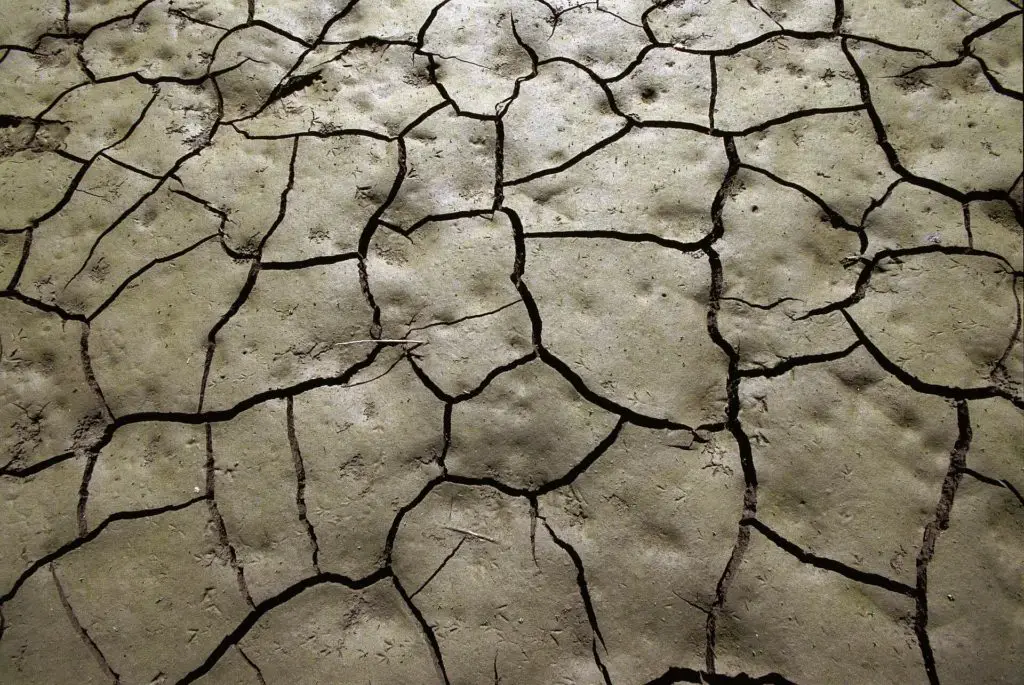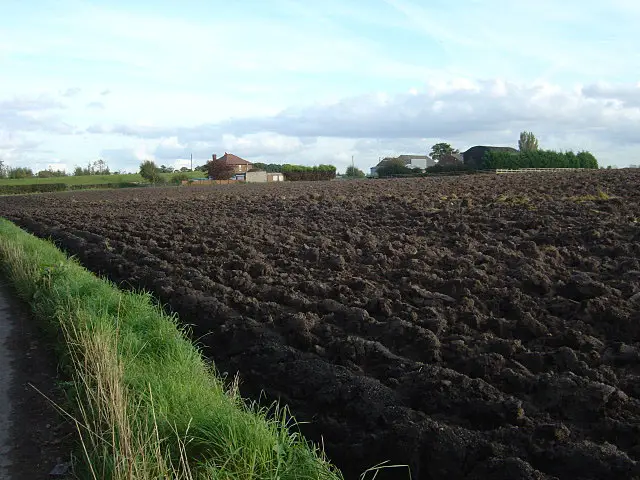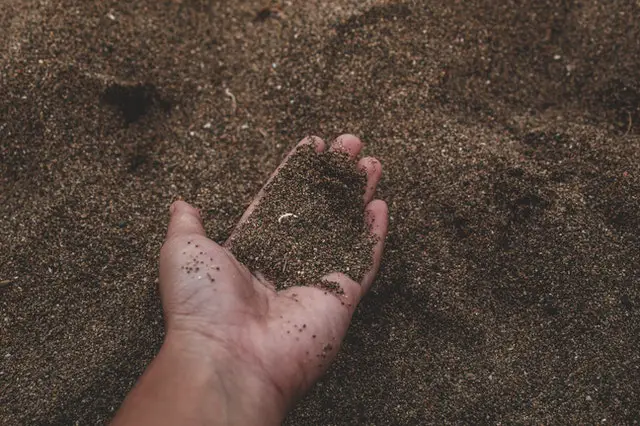We use affiliate links to run our site. When you buy through links on our site, we may earn an affiliate commission, without any added cost to you. Learn more
Do you want to grow plants, but aren’t sure what type of soil you have? This blog is for you! There are actually dozens of different types of soil. Each one looks and behaves differently.
Knowing the soil type before planting your seeds can save you a lot of time and money. Planting the wrong seeds in the wrong type of soil can shunt, injure or even kill your plants.
By taking a closer look at their texture and composition you can determine which type of soil you have in your garden, so you can begin growing plants correctly.
Depending on the presence of 3 different particles (sand, silt, and clay), the garden soil is classified into 4 basic types. They are sandy soil, silty soil, clay soil, and Loamy soil. Each of these soil types has its characteristics.
Professional gardeners use soil tests to determine soil composition, but you can also make your own deductions at home, I will teach you how to do that in this post.
So let’s understand the different kinds of soil we generally have in our gardens.
The soil is the main source of vital nutrients and water and is crucial for the healthy development of the plant. Click To TweetWhat is Soil?
Soil is a medium, consisting of unconsolidated minerals mixed with organic matter, water, air and life forms. You can think of it as the skin of the earth, covering its surface.
Soil is dynamic and is the main food source for plants in the garden. It provides vital nutrients and water and is crucial for the healthy development of the plant.
What Soil Is Made Up Of:
Soil is made up of mainly 5 components. minerals, organic matter, air, water and microorganisms. Each of these plays an important role in promoting plant health and growth.
Let’s break them down…
Minerals:
Minerals make up almost 50% of the total volume of the soil. The texture of the soil depends mainly on 3 types of particles in the soil, sand, silt and clay.
Sand is the largest component of soil (0.05 – 2.00 mm in diameter).
Silt particles are smaller than sand particles but larger in size they clay (0.002 – 0.05 mm in diameter).
Clay particles are the smallest of the three particles, (< 0.002 mm in diameter).
The texture of the soil is important to gardeners and farmers because it provides clues to soil fertility. The texture will affect how that soil can support plant health and growth.
Organic Matter:
The derived matters from dead plants and animals also help in building soil. Usually, You will find 1%-5% of organic matter in any type of soil. The percentage of decomposed organic matter in soil is an indicator of the fertility of that soil.
Air:
Air can make up approximately 2% to 50% of the soil volume. Air includes Oxygen, Carbon-Di-oxide, Nitrogen etc. the availability of air in soil also depends on the soil textures. The more the amount of sand particle in the soil the air would be in it.
Water:
Water is also a basic component of soil. Depending on the soil texture the percentage of water varies from 2%-50%.
Microorganism:
The number of microorganisms in the soil can be huge but as they take up very little space volume-wise they are less than 1% of the total soil volume. The microorganism can be as tiny as a bacterium and can be as large as an earthworm in size. They are crucial for a plant’s growth.
Garden Soil Classification/ What Are The Different Types of Soil:
If you’re planning to start a garden, you should know something about the different types of soil in your garden.
The classification of the garden soil is done basically on the composition of sand, silt, and clay found in the soil.
As such there are mainly 4 types of soil. They are:
- Sandy soil
- Silty soil
- Clay soil
- Loamy soil
Each soil type is different from the other one and has different features that make it suitable for certain types of plants only.
Sandy Soil:

Sandy soil is composed of mostly the largest sized particles (over 1/20 mm in diameter). As you touch them, they feel distinctively more dry and gritty than other soil.
Sand has some inherent advantages. As sandy soil is very light in weight, it warms up very quickly in the spring.
Due to its large particle size, it doesn’t pack as closely as other types of soil and thus has very good aeration and good drainage capacity.
The downside of the story is that sandy soil drains very quickly, the plants get very little time to absorb the nutrients which generally drains off with the water.
You can improve the water retention capacity of the sandy soil by adding organic compost, peat moss etc, these will help to retain the nutrient as well as moisture. Know more about how to improve sandy soil here.
The best plants for sandy soil are Tulips, Hibiscus, carrots, potatoes, squash etc.
Silty Soil:

The silty soil has much smaller particles compared to sandy soil. If you touch the soil with your finger it will give you a much smoother feeling compared to the sandy soil.
It is an intermediate between sandy soil and clay soil.
Silty soil retains water for longer than sandy soil. The drainage and aeration are far less than the sandy type.
Due to its water retention, silty soil doesn’t warm up as easily as sandy soil.
Most of the veggies and fruits will do well in silty soil if you give enough drainage to the plants. Some grasses and perennials also do well in silty soil.
Silty soil retains water longer than sandy soil, and the drainage and aeration are far less. As a result, silty soil doesn’t warm up very easily. Click To TweetClay Soil:

The average particle size of clay soil is less than 1/200 mm in diameter. That is why if you touch clay soil in a wet condition you will feel the stickiness in the soil.
The particles in the clay soil are packed very closely, so It can hold more water than any other type of soil.
As it has a tighter grip on the drainage it can also hold on to the nutrients for longer. Clay soil is usually very rich in plant nutrients.
The flip side of the story is high compaction leaves very little space for aeration and drainage in the soil.
Clay soil warms up very slowly in the springs and can become very hard if it gets dry. So, it can be a problem working with clay soil especially in the time of summers. But if you can manage clay soil properly, it can be the best soil for growing plants.
The best plants for clay soil are perennials, ornamental plants and fruit trees. Vegetables are generally difficult to grow in clay soil because of their cool and compact nature.
If properly managed clay soil type can be the best for growing plants. Click To TweetLoamy Soil:

Loamy soil is a mixture of sandy, silty and clay soil. Generally, most of the gardening is done in a loamy soil.
If mixed with the proper organic matter loamy soil is easy to maintain and need very few add-ons.
Having said all that loamy soil is not permanent and you can alter its nature. So don’t be disheartened if your nearby soil is not suitable for the type of crop you are thinking about growing.
The best plants for loamy soil are most vegetables, Bamboo, different shrubs, tubers, and berry crops.
How Can I Know What Kind of Soil Do I Have?
Now, before you start gardening first thing to know which soil type you have with you. Although it is always better to get your soil tested, you can get a brief idea about the nature of your soil easily at home.
Home tests are very easy, you don’t need any special equipment to find out what kind of dirt you have in your garden.
Here are the 3 simple ways to find out the soil type in your garden.
The Water Pouring Test:
The simplest way to tell if the soil is sandy or clay is by putting some water on it. If the water sinks in fast then the soil probably is sandy soil, if the water, on the other hand, takes a little time to go drain then the soil is clay soil.
In silty or loamy soil the water will take a bit more time than sandy soil to sink in but will be faster than clay.
The Soil Rolling Test:
Grab some handful of soil and try to roll the soil to a cylindrical shape. If you feel sand grains in the soil and the soil does not form a cylindrical shape then it is sandy soil.
Clay soil will roll very easily and give you a sticky feeling.
Sedimentation Test:
Add some soil to transparent glass, add water, shake well leave it to settle for 12 hours.
If after 12 hours you found water is mostly clear and most of the particles have fallen on the base of the container, the soil is sandy soil.
Clay & silty soils will leave muddy water with a thin layer of particles at the bottom.
Soil is one of the most important things in any garden. What kind of soil do you have? Is it good, bad or neutral? The truth is that different types will affect your gardening differently.
Knowing your soil type and correcting that as per the plant’s need, before planting your seeds will save you a lot of time and money.
Hopefully, you’ve found some useful information in this article. Here is more information on different soil types. Keep visiting this site for more interesting and informative articles.
Don’t Forget to PIN IT

Amazon and the Amazon logo are trademarks of Amazon.com, Inc, or its affiliates.
